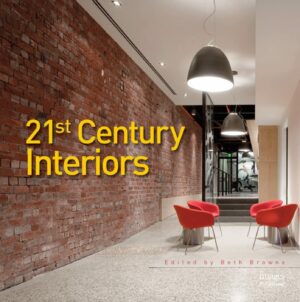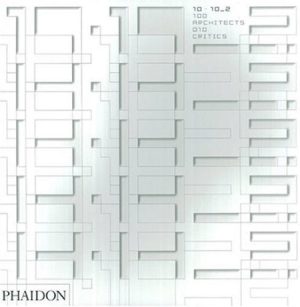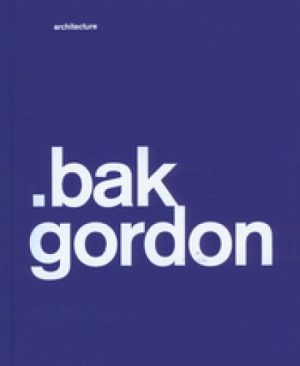During the 1960s Italys museum sector witnessed a fertile period of renewal. A generation of architects, working in partnership with the directors of museums, set about transforming into exhibition spaces a number of ancient monumental complexes located in the historic centres of some of the most important Italian cities. Among these was the brilliant and solitary Venetian architect Carlo Scarpa (1906-1978) who revitalised the discipline of museography by sagaciously combining it with restoration. His lucid intervention at Veronas Museo di Castelvecchio is emblematic of this approach: the medieval castle, the museum of ancient art, and modern architecture all harmoniously coexisting in a monument located at the heart of a city designated a UNESCO World Heritage Site. The far-sighted choice of Scarpa was owed to the then director of the museum, Licisco Magagnato, who tenaciously argued the case for the appointment of an architect specialising in this field to work on the citys principal museum of ancient art. The renovation work, which continued for more than a decade, took place in various phases (1958,1964, 1967 and 1968-1974) but in accordance with a remarkably consistent and coherent plan. In his work on Castelvecchio, carried out at a significant point in his career, Scarpa attained a remarkable balance between different aesthetic elements that is particularly evident in the sculpture gallery, where the renovations harmonise with the power of the 14th-century Veronese sculptures exhibited in this section of the museum. One of the most striking details is the location of the equestrian statue of Cangrande I della Scala. For the presentation of this work the architect conceived a backdrop of great poetry, drawing the visitors attention to its historical stratifications and simultaneously creating an exemplary essay in modern architecture. This museum is the most perfectly resolved of Scarpas works in terms of the complexity and coherence of its design, and today remains “outrageously” well preserved. It is therefore unsurprising that a photographer-artist such as Richard Bryant should have been attracted by the extraordinary compositional, spatial and luminous harmony of Castelvecchio. The book is introduced by an essay by Alba Di Lieto, the architect appointed to Verona City Councils Direzione Musei d’Arte e Monumenti, a scholar of Scarpa’s drawings, and the author of monographs on his work. She describes the architects renovation and locates it in the context of Italys architectural panorama. She also offers insights into the cataloguing of Scarpas graphic output in the context of the overall conservation of his work. The essay is followed by a brief history of the castle by Paola Marini, who was the director of Verona’s civic museum network for 22 years. In December 2015 she has taken on a new role as director of the Gallerie dell’Accademia in Venice the first of Scarpa’s museum projects in 1949. Valeria Carullo writes in her postscript about her experience by assisting Richard Bryant in photographing the castle. She is curator of The Robert Elwall Photographs Collection in the RIBA British Architectural Library. Richard Bryant is one of the best-known architectural photographers, working all over the world. He and Helene Binet are the only photographers with an honorary fellowship of the Royal Institute of British Architects.
Veste editoriale: Cartonato con Sovraccoperta
Formato: 28×30
Pagine: 52
Immagini a colori-b/n: 45
Lingua: IT-GB
Anno: 2016
ISBN: 9783932565816
-
NOTE:
Texts by Alba Di Lieto, Paola Marini and Valeria Carullo / Photographs by Richard Bryant
Potrebbero interessarti anche:
Prodotti correlati
-
2G 76: Bruther
59,00 € Aggiungi al carrello -
In Offerta
21st CENTURY INTERIORS
48,00 €Il prezzo originale era: 48,00 €.39,00 €Il prezzo attuale è: 39,00 €. Aggiungi al carrello -
In Offerta
20TH CENTURY EUROPEAN RATIONALISM
110,00 €Il prezzo originale era: 110,00 €.99,00 €Il prezzo attuale è: 99,00 €. Aggiungi al carrello -
10 VIAGGI NELL’ARCHITETTURA ITALIANA
35,00 € Aggiungi al carrello
During the 1960s Italys museum sector witnessed a fertile period of renewal. A generation of architects, working in partnership with the directors of museums, set about transforming into exhibition spaces a number of ancient monumental complexes located in the historic centres of some of the most important Italian cities. Among these was the brilliant and solitary Venetian architect Carlo Scarpa (1906-1978) who revitalised the discipline of museography by sagaciously combining it with restoration. His lucid intervention at Veronas Museo di Castelvecchio is emblematic of this approach: the medieval castle, the museum of ancient art, and modern architecture all harmoniously coexisting in a monument located at the heart of a city designated a UNESCO World Heritage Site. The far-sighted choice of Scarpa was owed to the then director of the museum, Licisco Magagnato, who tenaciously argued the case for the appointment of an architect specialising in this field to work on the citys principal museum of ancient art. The renovation work, which continued for more than a decade, took place in various phases (1958,1964, 1967 and 1968-1974) but in accordance with a remarkably consistent and coherent plan. In his work on Castelvecchio, carried out at a significant point in his career, Scarpa attained a remarkable balance between different aesthetic elements that is particularly evident in the sculpture gallery, where the renovations harmonise with the power of the 14th-century Veronese sculptures exhibited in this section of the museum. One of the most striking details is the location of the equestrian statue of Cangrande I della Scala. For the presentation of this work the architect conceived a backdrop of great poetry, drawing the visitors attention to its historical stratifications and simultaneously creating an exemplary essay in modern architecture. This museum is the most perfectly resolved of Scarpas works in terms of the complexity and coherence of its design, and today remains “outrageously” well preserved. It is therefore unsurprising that a photographer-artist such as Richard Bryant should have been attracted by the extraordinary compositional, spatial and luminous harmony of Castelvecchio. The book is introduced by an essay by Alba Di Lieto, the architect appointed to Verona City Councils Direzione Musei d’Arte e Monumenti, a scholar of Scarpa’s drawings, and the author of monographs on his work. She describes the architects renovation and locates it in the context of Italys architectural panorama. She also offers insights into the cataloguing of Scarpas graphic output in the context of the overall conservation of his work. The essay is followed by a brief history of the castle by Paola Marini, who was the director of Verona’s civic museum network for 22 years. In December 2015 she has taken on a new role as director of the Gallerie dell’Accademia in Venice the first of Scarpa’s museum projects in 1949. Valeria Carullo writes in her postscript about her experience by assisting Richard Bryant in photographing the castle. She is curator of The Robert Elwall Photographs Collection in the RIBA British Architectural Library. Richard Bryant is one of the best-known architectural photographers, working all over the world. He and Helene Binet are the only photographers with an honorary fellowship of the Royal Institute of British Architects.
Veste editoriale: Cartonato con Sovraccoperta
Formato: 28×30
Pagine: 52
Immagini a colori-b/n: 45
Lingua: IT-GB
Anno: 2016
ISBN: 9783932565816
-
NOTE:
Texts by Alba Di Lieto, Paola Marini and Valeria Carullo / Photographs by Richard Bryant
Potrebbero interessarti anche:
Prodotti correlati
-
2G 76: Bruther
59,00 € Aggiungi al carrello -
In Offerta
10X10/2: 100 Architects, 10 Critics
90,00 €Il prezzo originale era: 90,00 €.76,50 €Il prezzo attuale è: 76,50 €. Aggiungi al carrello -
100 IDEE CHE HANNO COSTRUITO L’ARCHITETTURA
35,00 € Aggiungi al carrello -
.BAK GORDON
59,00 € Aggiungi al carrello
FAQ
Leggi le domande frequenti per avere maggiori informazioni sui metodi di pagamento, la spedizione e molto altro
Per acquistare uno o più libri è sufficiente compilare l’apposito modulo al quale si accede dalla scheda di ciascun libro.
Qualora i volumi ordinati non siano tutti immediatamente disponibili, il nostro staff si riserva di contattarti via mail per concordare le modalità di spedizione (A: invio immediato dei volumi presenti a magazzino e successivo invio di quelli mancanti – B. invio unico dopo il ricevimento da parte nostra dei volumi mancanti).
N.B. la fattura deve essere esplicitamente richiesta al momento dell’ordine, comunicando la ragione sociale completa di partita IVA e/o Codice Fiscale e Codice SDI.
Ai sensi dell’Art.5 del relativo Decreto, l’acquirente ha il diritto di recedere dal contratto e restituire i volumi ordinati entro 10 giorni lavorativi, purchè nel medesimo stato in cui li ha ricevuti. Il diritto di recesso dovrà essere esercitato mediante invio di lettera raccomandata A.R. a: LIMOND S.a.s. – via Arnolfo di Cambio 24/A – 37138 Verona (VR) – entro il termine di 10 (dieci) giorni lavorativi dal ricevimento dei volumi.
Tutti i resi dovranno essere autorizzati da Limond S.a.s (tel. +393472455641) con l’assegnazione di un numero di autorizzazione alla resa. Le spese di spedizione saranno interamente a carico del cliente e non si accetteranno pacchi in contrassegno.
Al ricevimento dei volumi, e verificata la loro integrità, Limond S.a.s. provvederà, entro 10 (dieci) giorni, ad accreditare il cliente del valore dei volumi restituiti.
La tempestività nell’evasione dell’ordine è determinata dalla disponibilità della merce ordinata. In caso di immediata disponibilità l’ordine verrà evaso entro 2 giorni lavorativi. Qualora uno o più libri non dovessero essere presenti a magazzino possono essere ordinati su richiesta; il nostro staff informerà il cliente, via mail, circa i tempi necessari per l’evasione dell’ordine.
Pagamento tramite bonifico bancario anticipato alle coordinate comunicate in fase di check-out
I costi di invio (che comprendono imballo e spedizione) per libri e riviste in ITALIA sono i seguenti:
Servizio postale: 3-5 gg (per merce immediatamente disponibile presso il nostro magazzino)
- Spedizioni per acquisti fino a 62,00€: €5,50
- Spedizioni per acquisti fino a 120,00€: €9,50
- Spedizioni per acquisti superiori a 120,00€: Gratuite
Per una quotazione dei costi di invio in EUROPA o per spedizioni internazionali vengono richiesti i seguenti dati:
- Nome/Cognome
- Indirizzo (comprensivo di Codice postale)
- Telefono (meglio se Cellulare)
Alla conferma di accettazione, verranno comunicate coordinate bancarie/account PayPal da utilizzare per il pagamento. Un Una volta ricevuto, verrà evasa la spedizione inoltrando notifica e tracciabiltà.








